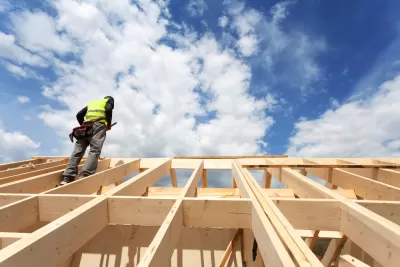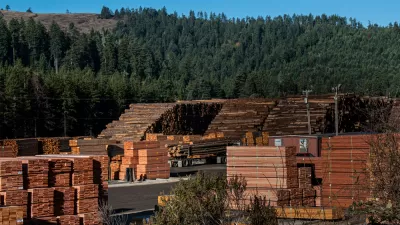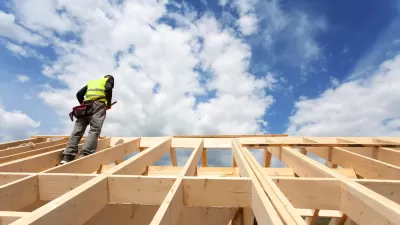Home buyers are likely to pay the cost of a recent decision by the U.S. Commerce Department.

Peter Baker and Ian Austen report: "The Trump administration announced on Monday that it would impose new tariffs on Canadian softwood lumber imports, escalating a longstanding conflict with America’s second-largest trading partner."
"The United States imported $5.7 billion in softwood lumber last year alone, mainly for residential home building," according to the article, which focuses mostly on the trade implications of the Commerce Department's decision to impose the tariff.
In a separate article, Chris Kirkham and Sarah Nassauer dig into the implications of the tariff for the U.S. home-building industry, which they say "has struggled with higher labor costs since the housing crash a decade ago." Here, the reporters explain how lumber fits into the total cost of new homes:
Based on analysis last year, a builder spends an average of $15,413 for the softwood lumber in a single-family home, or about 7% of the total construction cost of a home. Lumber cost increases so far this year have added an estimated $3,000 to the cost of building a typical home, according to the home builders’ association.
Lumber costs are already higher than they have been in a decade, according to the article.
Another article by Diana Olick calculates the expected cost U.S. home buyers will likely pay to cover the new tariff. Based on calculations by the National Association of Home Builders, homebuyers will increase Canadian lumber costs by 6.4 percent, or another $1,236 to the cost of an average single-family home.
FULL STORY: In New Trade Front, Trump Slaps Tariff on Canadian Lumber

Alabama: Trump Terminates Settlements for Black Communities Harmed By Raw Sewage
Trump deemed the landmark civil rights agreement “illegal DEI and environmental justice policy.”

Planetizen Federal Action Tracker
A weekly monitor of how Trump’s orders and actions are impacting planners and planning in America.

The 120 Year Old Tiny Home Villages That Sheltered San Francisco’s Earthquake Refugees
More than a century ago, San Francisco mobilized to house thousands of residents displaced by the 1906 earthquake. Could their strategy offer a model for the present?

In Both Crashes and Crime, Public Transportation is Far Safer than Driving
Contrary to popular assumptions, public transportation has far lower crash and crime rates than automobile travel. For safer communities, improve and encourage transit travel.

Report: Zoning Reforms Should Complement Nashville’s Ambitious Transit Plan
Without reform, restrictive zoning codes will limit the impact of the city’s planned transit expansion and could exclude some of the residents who depend on transit the most.

Judge Orders Release of Frozen IRA, IIJA Funding
The decision is a victory for environmental groups who charged that freezing funds for critical infrastructure and disaster response programs caused “real and irreparable harm” to communities.
Urban Design for Planners 1: Software Tools
This six-course series explores essential urban design concepts using open source software and equips planners with the tools they need to participate fully in the urban design process.
Planning for Universal Design
Learn the tools for implementing Universal Design in planning regulations.
Clanton & Associates, Inc.
Jessamine County Fiscal Court
Institute for Housing and Urban Development Studies (IHS)
City of Grandview
Harvard GSD Executive Education
Toledo-Lucas County Plan Commissions
Salt Lake City
NYU Wagner Graduate School of Public Service





























